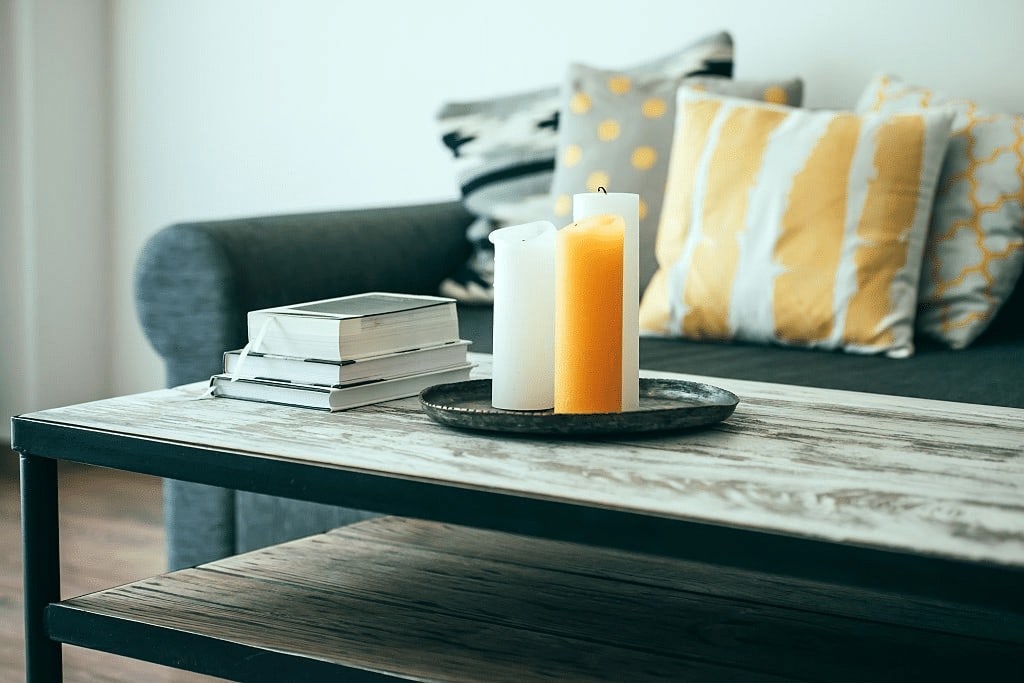All living rooms benefit from a well designed coffee table – be it stylishly rustic or a stunning modern model. Not only incredibly useful for placing your coffee cups and a plate of cookies, but from a design perspective. Artfully arranged, a coffee table can pull a room together; with a different height level than the sofa or arm chair, it forms a bridge between the two, adding a sense of balance and introducing a hard surface next to the soft fabrics.
Although the stereotypical coffee table books add a glossy interest, there’s so much more you can do to finish a coffee table perfectly, enhancing your living room immensely.
When styling a coffee table it’s important to allow it to perform as a functional piece of furniture, whilst still looking attractive as from a design aesthetic.
Firstly, consider balance – it’s an important design element for any interior. You don’t want to interrupt the flow of movement around the room – another crucial factor in any room design, so anything you place on your table should keep that balance. Now, balance does not mean symmetrical eg if an irregular pile of three books is placed at one end, we wouldn’t recommend you repeated that at the other end, but instead choose something that is slightly lower, and a smaller base size – maybe a decorative ceramic plate with 3 or 5 differing sizes of thick candles on it (odd numbers work better in groupings). Both the books and the candles bring in two separate textural elements, and while the books are hard and angular, the candles are softly cylindrical. But working together, they balance each other, and increase the flow around the room.
Maybe if you have a collection of pretty ceramic vases, you could display three complementary ones together, balanced by a clear glass vase of flowers, or by something placed nearby, on either another small table or the floor.
The whole idea of balance and flow will get easier and you’ll become more confident in manipulating them to suit your own style and taste. It can help if you imagine a line running through your items on your coffee table. That line should curve gently upwards before curving down again – the eye loves a good curve!
Next we’ll consider the value of composition. The items you display as groupings should have something in common, be it height, material, color and so on, or complement each other. For example, if we take the three ceramic vases – imagine if two of those vases have rotund bases and are greenish in color, and the third is taller, cylindrical and orange. All three are vases and made of ceramic, orange complements green beautifully, and the rotund shapes complement the taller, more upright form. A perfect composition, including balance and flow – the invisible curved line will skim the lip of the two squatter vases, and sweep up to the taller one, before flowing down to the lower lip again.
These basic design principles – balance, flow and composition will soon become second nature to you, and as you go to visit friends for coffee, you’ll start to gain ideas on what to do and what not to with your own home. Just remember, though, whilst these are important ideas, they are only guidelines, and what you like and enjoy is more important than any principle!
For more coffee table design ideas, check out this great video:


